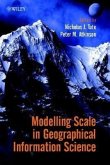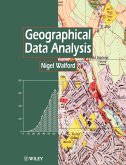This book is the first contemporary book to compare and integrate the various ways geographers think about and use scale across the spectrum of the discipline and includes state-of-the-art contributions by authoritative human geographers, physical geographers, and GIS specialists. The editors place competing concepts of scale side by side, demonstrating how different aspects are significant for each, and providing a detailed comparative assessment. They set out from the premise that there is much acknowledged common ground between these different approaches and that valuable insight can be gained by exploring it. In light of the increased interest in global change and globalisation, there has been a huge surge of interest in the environmental and human sciences in the relationship between the global, the regional and the local. For this reason, this cutting edge survey of how geographers conceptualise scale should be of interest across a broad range of disciplines.
"...engages incisively with what consideration of scale canoffer to a wide range of crucial social, physical, and cartographicissues - from environmental monitoring to urban development- and provides an essential starting point in terms of theuses and meanings of the concept." John Agnew, University ofCalifornia Los Angeles
"This volume is both timely and welcome. As society faces a newworld order that reflects the increasing tension and simultaneitybetween local and global forces, it is essential to lay thefoundations toward a comprehensive 'theory of scale'.This volume, through its integration and contemplation of disparateideas drawn from the spectrum of geographical perspectives, is acrucial first step toward that grand agenda." Bernie Bauer,University of Southern California
"This is a fascinating book...it covers an intimidating array ofsubjects but shows how one aspect - scale - can affect all of themin surprisingly similar ways. The depth and breadth of coveragemakes the text an invaluable one." Dr Paul Ganderton, TeachingEcology News.
"This book is important reading for all geographers based on itscatholic content and because it provides a lens into our diversediscipline. Few edited collections contain such consistently strongchapters. Scale and Geographic Enquiry is recommended forall geographers, especially graduate students and theirinstructors." The Geographical Journal
"This volume is both timely and welcome. As society faces a newworld order that reflects the increasing tension and simultaneitybetween local and global forces, it is essential to lay thefoundations toward a comprehensive 'theory of scale'.This volume, through its integration and contemplation of disparateideas drawn from the spectrum of geographical perspectives, is acrucial first step toward that grand agenda." Bernie Bauer,University of Southern California
"This is a fascinating book...it covers an intimidating array ofsubjects but shows how one aspect - scale - can affect all of themin surprisingly similar ways. The depth and breadth of coveragemakes the text an invaluable one." Dr Paul Ganderton, TeachingEcology News.
"This book is important reading for all geographers based on itscatholic content and because it provides a lens into our diversediscipline. Few edited collections contain such consistently strongchapters. Scale and Geographic Enquiry is recommended forall geographers, especially graduate students and theirinstructors." The Geographical Journal








